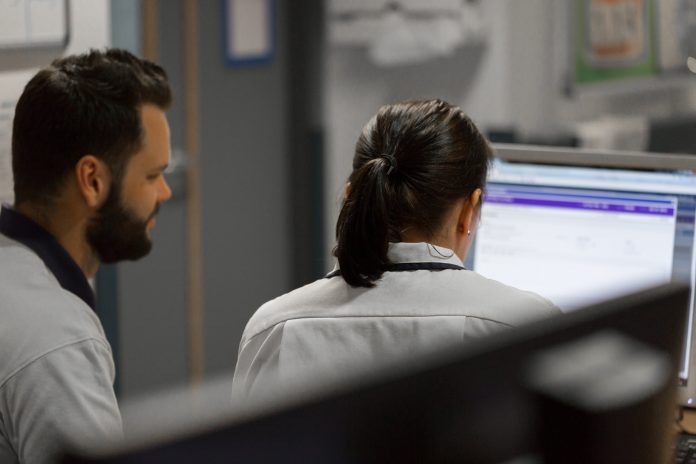Mike Odling-Smee, Technical Director at Aire Logic, takes us on a journey around interoperability in the NHS beyond the cliché when it comes to the opportunities around healthcare
The potential for future healthcare seems unlimited if only data could be shared (appropriately). The opportunities in artificial intelligence (AI) being able to predict conditions and allow clinicians to deliver life-changing care for patients is in our hands. Never has there been such a drive to achieve interoperability in the NHS yet we seem unable to make great strides forward.
Of course, there are pioneers across the NHS that have achieved great outcomes for the patient care journey because they have achieved interoperability between systems, getting the vital data to those who need it when they need it. But on the scale of the NHS, where paper documentation is still vastly prevalent, these are exceptions rather than the norm.
The mechanics of interoperability, the technical connecting of the systems, is not the driver; although IT specialists relish a challenge. Achieving interoperability is to bring an end to the “burden of managing complex interactions and data flows between trusts, systems and individuals that too often falls on patient and clinicians” NHS Long Term Plan.
For patients: asked for their next of kin, past medical history and repeatedly conduct a Census level full demographic check, in every setting during their care journey.
For clinicians: without information to deliver holistic care that gives a patient the best outcomes that are achievable with modern healthcare capabilities.
For future healthcare; potentially stifling innovation, new treatments and improved health outcomes across the healthcare landscape.
It’s time to take the chance.
Pragmatic interoperability
One way or another Aire Logic has been involved interoperability for 13 years (as individuals longer still), working on National Systems in the UK and abroad, National Specifications, with data standards bodies, customer implementation projects and our product suite.
We know what good looks like, but equally, understand the barriers to implementation. We have been through the following common stages of Healthcare Interoperability thinking:
- I come from an integration background in <insert your industry here>, healthcare should be no different – how hard can it be?
- Ok, healthcare has some fuzzy concepts that may require special attention and can be dangerous if mangled by IT (e.g. allergy suspected? Confirmed? Patient-reported?) – actually, maybe healthcare is a little harder than other industries?
- We need robust standards and clinical coding systems that should ensure good interoperability between systems in a clinically safe fashion.
- [Several months/years elapse…]
- Why are these standards so complex, and why does the picture look only slightly better than 10 years ago? How come multi-system projects take so long to deliver and often fail?
- Perhaps we should be pragmatic and not plan for perfection – let’s work with a heterogeneous landscape in front of us and lower the bar to entry. We can introduce ideal interoperability as an optimisation on an existing clinical pathway (and let’s ensure we don’t just stop once human to human communication has been achieved).
In summary, interoperability is a journey for people, organisations and suppliers alike. As per our agile roots, we would recommend the industry focus on low barrier to entry, early delivery of a working Minimum Viable Product – MVP (for instance cross-organisation human to human communication – however, achieved), with iterative improvements thereafter.
Our only caveats to this approach is that organisations should have strict controls in place to make sure they don’t stop or move budgets elsewhere once the MVP solution has been delivered – the gold standard of interoperability should always be actively worked towards – but in this case with a background of real-world use and benefits evidence to show how it can be further optimised.
Equally, we would also encourage all buyers (e.g. procurement/IT departments) have an in-depth understanding of interoperability requirements and hold suppliers to account. Don’t ask simple tick-box questions such as Do you comply with the HL7 standard? As this is easy for suppliers to reply with a tick even though their compliance to HL7, it may be for a completely different scenario to the one you need?
Here at Aire Logic, we provide advice and systems delivery for national bodies, national systems and services, NHS organisations, regional records, other private sector suppliers and also for our products. We strive to lower the barrier to entry to make sure we can get going quickly, but can ultimately deliver fully structured and coded data exchange between those systems that are capable of using standards such as HL7 FHIR.
For instance – with our forms4health digital smart forms platform, we capture structured and coded information at the source, and can indeed deliver that using standards such as HL7 FHIR to systems that are capable, however, we can equally deliver information, provide clinical and business benefits to care settings that only have secure email or even just a fax machine!
Connection is interoperable
GP Connect Aire Logic is leading a major NHS programme, GP Connect, which aims to unlock the data in GP Systems across the country via the creation of a series of standardised, HL7 FHIR interfaces.
Care Connect Aire Logic is working with NHS Digital to define the Care Connect API, development and test platform as well as the tooling to support the creation and delivery of FHIR based specifications. These will become the central standards and APIs for NHS cross-system communication.
Spine2/MESH/National Adapter – The Aire Logic DevOps team has been involved with many aspects of NHS Digital’s in-house development from CIS, eRs, Spine, MESH and the national adapter providing on-site development and devOps engineers as well as architectural strategy and advice.
Leeds Care Record – A collaborative involving over 140 organisations. The LCR is used in all 105 GP practices across Leeds, the local mental health trust, Leeds Community Health, Leeds City Council, and Leeds’ two major hospices, ensuring that care records are available wherever an individual engages with the local health and care system.
Digital smart platform forms4health
Please note: This is a commercial profile











